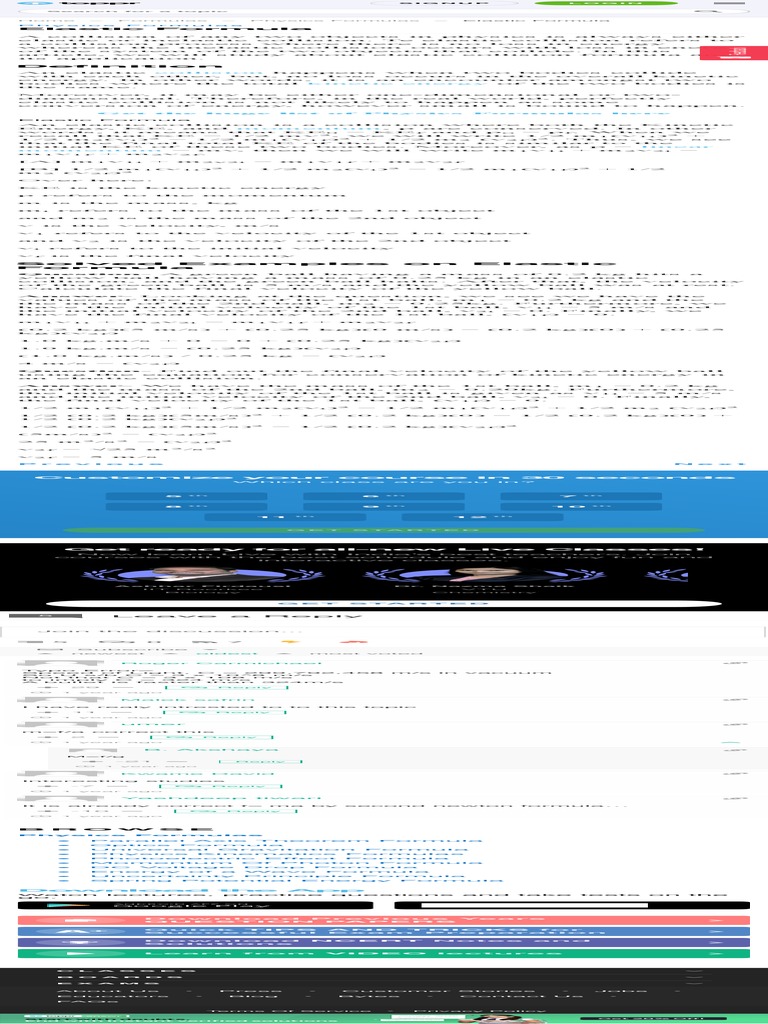10 Elastic Equation Tips For Better Demand Analysis

Understanding the dynamics of demand is crucial for businesses, economists, and policymakers. At the heart of demand analysis lies the elastic equation, a powerful tool that helps in measuring how responsive the quantity demanded of a good is to changes in its price or other influential factors. The concept of elasticity is not only confined to price but can also be applied to income, cross-price elasticity, and even advertising efforts. Here are 10 elastic equation tips that can enhance your demand analysis capabilities:
Master the Basic Elasticity Formula: The elasticity of demand with respect to price is given by the formula: Ed = (dQ/Q) / (dP/P), where Ed is the elasticity of demand, Q is the quantity demanded, and P is the price of the good. Understanding this formula is the first step in applying elasticity to real-world scenarios.
Interpret Elasticity Coefficients Correctly: An elasticity coefficient (Ed) greater than 1 indicates that the demand is elastic, meaning that a small price change leads to a large change in quantity demanded. If Ed is less than 1, demand is inelastic, suggesting that changes in price have little effect on quantity demanded. An Ed of exactly 1 means demand is unit elastic, where the percentage change in quantity demanded equals the percentage change in price.
Apply the Concept of Income Elasticity: Income elasticity of demand measures how responsive the quantity demanded of a good is to changes in consumer income. It’s calculated as (dQ/Q) / (dI/I), where I is income. Knowing whether a good is a normal good (positive income elasticity) or an inferior good (negative income elasticity) can inform marketing strategies and production decisions.
Understand Cross-Price Elasticity: This concept examines the relationship between the quantity demanded of one good and the price of another. A positive cross-price elasticity indicates that the two goods are substitutes, whereas a negative cross-price elasticity shows that they are complements. This understanding is vital for businesses looking to understand consumer behavior in response to price changes of related products.
Recognize the Importance of Advertising Elasticity: Advertising elasticity measures how changes in advertising expenditures affect the quantity demanded of a product. It can be a critical metric for marketing budget allocations, helping companies understand the return on investment (ROI) of their advertising efforts.
Analyze Seasonal Demand Patterns: For many goods, demand varies significantly with the seasons. Understanding these patterns through elasticity analysis can help businesses manage inventory, staffing, and pricing strategies more effectively throughout the year.
Consider the Time Dimension: The elasticity of demand can change over time due to factors like consumer habit formation or changes in preferences. Short-run elasticity might differ from long-run elasticity, as consumers may initially respond mildly to price changes but adjust more significantly over time as they become aware of substitutes or as their consumption habits evolve.
Account for Aggregate vs. Individual Demand: While individual demand curves can provide insights into consumer behavior, aggregate demand reflects the total quantity demanded in a market. Understanding the elasticity of aggregate demand can inform broader economic policies and business strategies, as it takes into account the behavior of all consumers in the market.
Use Elasticity to Inform Pricing Strategies: Businesses can use elasticity analysis to determine the optimal price for their products. For example, if demand is inelastic, a company may increase the price without significantly reducing the quantity sold, thereby increasing revenue. Conversely, if demand is elastic, reducing price can lead to a substantial increase in quantity demanded.
Integrate Elasticity with Other Economic Concepts: For a comprehensive analysis, elasticity should be considered alongside other economic principles such as supply and demand equilibrium, marginal analysis, and the concept of diminishing marginal utility. This integrated approach provides a more nuanced understanding of market dynamics and consumer behavior.
In conclusion, mastering the elastic equation and its applications is essential for conducting rigorous demand analysis. By understanding how changes in various factors influence the quantity demanded of goods and services, businesses and policymakers can make informed decisions that balance supply with demand, optimize pricing, and allocate resources more efficiently. Whether analyzing the market for a new product launch or assessing the impact of economic policies, the principles of elasticity offer valuable insights into the complex interactions within markets.
What is the primary use of the elastic equation in demand analysis?
+The primary use of the elastic equation is to measure how responsive the quantity demanded of a good is to changes in its price or other influential factors, such as income or the prices of related goods.
How does understanding elasticity help in pricing strategies?
+Understanding elasticity helps businesses determine whether they can increase prices without losing significant sales volume (if demand is inelastic) or if reducing prices will lead to a substantial increase in sales (if demand is elastic), thereby maximizing revenue.
What is the difference between income elasticity and cross-price elasticity?
+Income elasticity measures the responsiveness of the quantity demanded of a good to changes in consumer income, while cross-price elasticity measures the responsiveness of the quantity demanded of one good to changes in the price of another good, indicating whether the goods are substitutes or complements.



